After nearly a year of playing with these two pistols, it’s fair to say this review is way overdue. On the plus side, I’ve managed to put a lot of rounds through both of these double-stack 1911s (a.k.a., 2011s) from Rock Island Armory and have shot them in the heat of summer, in deep snow and driving rain. Despite the round count, weather conditions and a complete lack of any cleaning or lubrication since they arrived last summer, they’re still running strong. They’re accurate, reliable, and fast.
Each of these pistols comes with two magazines, owner’s manual, warranty card, fired cases and sight adjustment tool. In these frames, both 10mm and .40 S&W use identical 16-round magazines.
The .40 is RIA’s PRO Match Ultra HC .40S&W. It has a 5″ barrel and a full dust cover without rails.
The 10mm is the PRO Match Ultra 6″ HC 10mm. As you’d guess from the name, it sports a 6″ barrel, which squeezes some additional velocity out of the powerhouse cartridge.

A steel, double-stack frame is a pretty wide affair. RIA keeps its 2011s from feeling too much like bricks by maintaining nice curves and by using wafer-thin G10 grip panels. The .40 is fully checkered on both the frontstrap and backstrap, while the 10mm is checkered on the backstrap and sports vertical serrations on the front.
The .40 is perhaps more competition-oriented, which may explain why it sports a rail-free dust cover. On the 10mm side, there’s no shortage of rail estate with five slots to choose from. In both cases, that weight over the nose noticeably reduces muzzle flip and felt recoil.
Rear sights are fully-adjustable units from LPA and are dovetailed in a low-mount slide cut.
Both pistols also rock an orange, fiber optic front sight.
And they both have giant magazine well funnels. Combined with the pronounced taper at the top of the double stack mags, it’s darn hard to miss.
Dropping the mags, however, is a bit harder than inserting them. The fat frame can make fully depressing the mag release somewhat of a trick, especially if you have smaller hands. An oversized release that extends towards the grip panel would make dropping mags faster and easier without necessitating any shift in grip. Shooters with huge hands probably won’t have this issue, but it’s a mild stretch for my men’s size L glove-wearing hands.
The curved, serrated, skeletonized trigger is adjustable for overtravel. There’s a short amount of takeup before stopping against the sear on both pistols. They’re then both practically creep-free before a clean break. RIA states a break weight between 4 and 6 lbs for both of these models, which is a somewhat wide margin of error. My two guns measure nearly in that range with the .40 breaking at 3.75 lbs and the 10mm just over 5 lbs.
Bushingless bull barrels lock up snugly in both slides.
The .40 has a solid, one-piece guide rod while the 10mm uses a two-piece guide rod that’s solid and full length once bolted together.
Parts fit is decent — better than what the budget-priced 1911 haters will assure you you’ll get from a Rock Island. Tolerances between slide and frame rails, beavertail grip safety and frame and grip panels and frame are looser than you’d get on a high-end gun. Fancier machinery, reducing tool life, and manual fitting all takes time and, more importantly, money. Fit where it really counts — barrel hood, lugs, and bull nose into their respective places in the slide — is surprisingly good. It’s clean, snug, and consistent on both guns.
Cast slides and frames are parkerized. It isn’t the nicest looking finish out there, but it works. RIA has also done a good job with the finish’s consistency. I’ve seen a lot of parkerizing with varying gloss levels and color tones in different areas of individual parts. Other than my fingerprints and splotches of gun lube, these pistols don’t have that issue.
On The Range
These heavy pistols shoot like they’re a caliber smaller; the .40 feels like a 9mm and the 10mm feels like it’s shooting weak .45 (okay, okay, that isn’t a “smaller” caliber but .45 has a “push” that’s different from the “snap” of .40, and this big honkin’ 10mm 2011 ain’t very snappy).
On top of the weight — especially that at the muzzle end — the wide backstrap spreads the already-diminished recoil across a generous swath of palm. These are definitely two of the softest-shooting pistols for their caliber that I’ve shot.
On the downside, they’re fat! It feels good in the hand but, as mentioned earlier, I can’t operate the magazine release without shifting my grip, which slowed me down on competition stages. The slide lock is completely out of reach for my strong hand thumb unless I rotate the pistol in my grip fairly severely.
Actual grip width is about 1.35″, which is only 0.17″ thicker than a GLOCK 17’s grip, but it’s very noticeable. Some of that is down to the gun’s controls, designed for a single stack 1911. Wth the grip panels on these RIAs, that would measure about 1.050″ across the grip. In short, the controls aren’t exactly where they should be or sized as they should be.
As I much as I like G10 grips, the ones on these pistols are pushing the limits of how thin one can go with the material. They flex a bit, and the front edges aren’t perfectly flush with the frame (gap measures ~0.033″). While shooting I can feel the left side front edge flexing under my fingertips as it springs back against my efforts to squeeze it down against the frame.
For shooters with large hands, though, the ergonomic issues of a metal frame, double stack 2011 are diminished, and you’re left with a couple of truly sweet shooting guns. I was very fast and accurate with both of these RIA’s, and it’s hard for me to choose one over the other.
The longer sight radius of the 10mm scored me a couple of flawless A-zone-only runs on a competition stage, while the reduced muzzle flip and slightly cleaner, definitely lighter trigger of the .40 made me faster. In fact, the first rounds I put through the 10mm were on a competition stage — I scored in the top third of competitors for that run — and the first shots through the .40 cleaned up in the AutoTargets review (video). They’re both a heck of a lot of fun to shoot.
Rested accuracy proved pretty good. With a handful of groups downrange from each pistol at 25 yards, the 10mm was ever so slightly better on average. Again I attribute that to the longer sight radius. I think it would have pulled out a more noticeable lead if its trigger were as nice as the .40’s. In practical use on the range, shooting freehand and while on the move, the nice sight setup made both RIA’s extremely accurate.
A year later and many hundreds of rounds through both guns, including Underwood and some other hot loads through the 10mm, and I have yet to see a single stoppage or glitch of any sort. I shot the guns in the snow, in the rain, in the sun in triple-digit temps; and on hot, dusty days. I haven’t cleaned or lubed them, and they’re still running great. It’s about time to add some lube, but I’m impressed with the reliability of both of these pistols.
Conclusion
Rock Island Armory is known as a particularly affordable 1911 brand. There are some aspects to the guns’ fit and finish that don’t stack up with more expensive alternatives. For instance, the shape of the ambi thumb safeties leaves a bit to be desired with their sharp edges and corners, the parkerized finish is functional, but only average to look at, and the grip panels exhibit some gaps on the frame.
Naturally some of those gripes are easy to fix. Regardless, right out of the box, these pistols are competition- and/or hunting-ready. They’re reliable, accurate, and fast. Not to mention a ton of fun to shoot. At the RIA price point, they’re a good value, considering that many of the 2011 alternatives cost well over twice the price.
Specifications: 10mm Auto
Caliber: 10mm Auto
Capacity: 16+1
Weight: 3.3 lbs with empty magazine (as measured)
Action: Single Action Only, 5.1 lbs (as measured)
Barrel: 6.0″, 6 groove, 1:16″ twist
Sights: Orange fiber optic front, LPA fully adjustable rear
Finish: Parkerized
Price: $1,322 MSRP (closer to $1,050 retail)
Specifications: .40 S&W
Caliber: .40 S&W
Capacity: 16+1
Weight: 3.08 lbs with empty magazine (as measured)
Action: Single Action Only, 4.75 lbs (as measured)
Barrel: 5.0″, 6 groove, 1:16″ twist
Sights: Orange fiber optic front, LPA fully adjustable rear
Finish: Parkerized
Price: $1,077 MSRP (closer to $845 retail)
Ratings (out of five stars):
Accuracy: * * * * *
While I’ve definitely had greater success with other pistols off a sandbag rest, that isn’t as important to me as practical accuracy. On the range these RIA’s are dead on.
Ergonomics: * *
Thanks to the extremely slim grips I found these pistols comfortable to hold. They weren’t too big for my hands for shooting purposes, and control and confidence were great. However, the magazine release and slide stop were out of usable reach for my strong side thumb (again, proper fit in men’s size L gloves, so not exactly midget hands) without shifting my grip. I like the feel of the safety detent, but found the safety levers themselves to be a bit sharp.
Reliability: * * * * *
Ran multiple brands of ammo in every weather condition right out of the box, and kept on trucking without cleaning or lubrication.
Customize This: * * * *
It’s a 2011, but most of the parts are still 1911. Controls, fire control parts, grip panels, sights, and more can be swapped out easily. The double stack frame shouldn’t affect holster fit, but the extended dust cover/rail and long slide will.
Concealed Carry: *
Short of a Desert Eagle there aren’t a whole heck of a lot of pistols options that put you in larger or heavier territory. The 10mm is just shy of four pounds fully loaded with 180 grain ammo, and tips the scales at 4.041 lbs with 17 rounds of 220 grain slugs.
Overall: * * * *
At a competitive retail price of about $850, the PRO Match Ultra .40 in particular offers solid value for what is really a competition-ready pistol right out of the box. I’d likely slap an oversized magazine release on it and call it a day. While fit and finish aren’t near premium levels, these guns shoot like champs and I was just as fast and accurate with them as I am with many pistols at double or even triple the price range. They’ve been totally reliable, too.

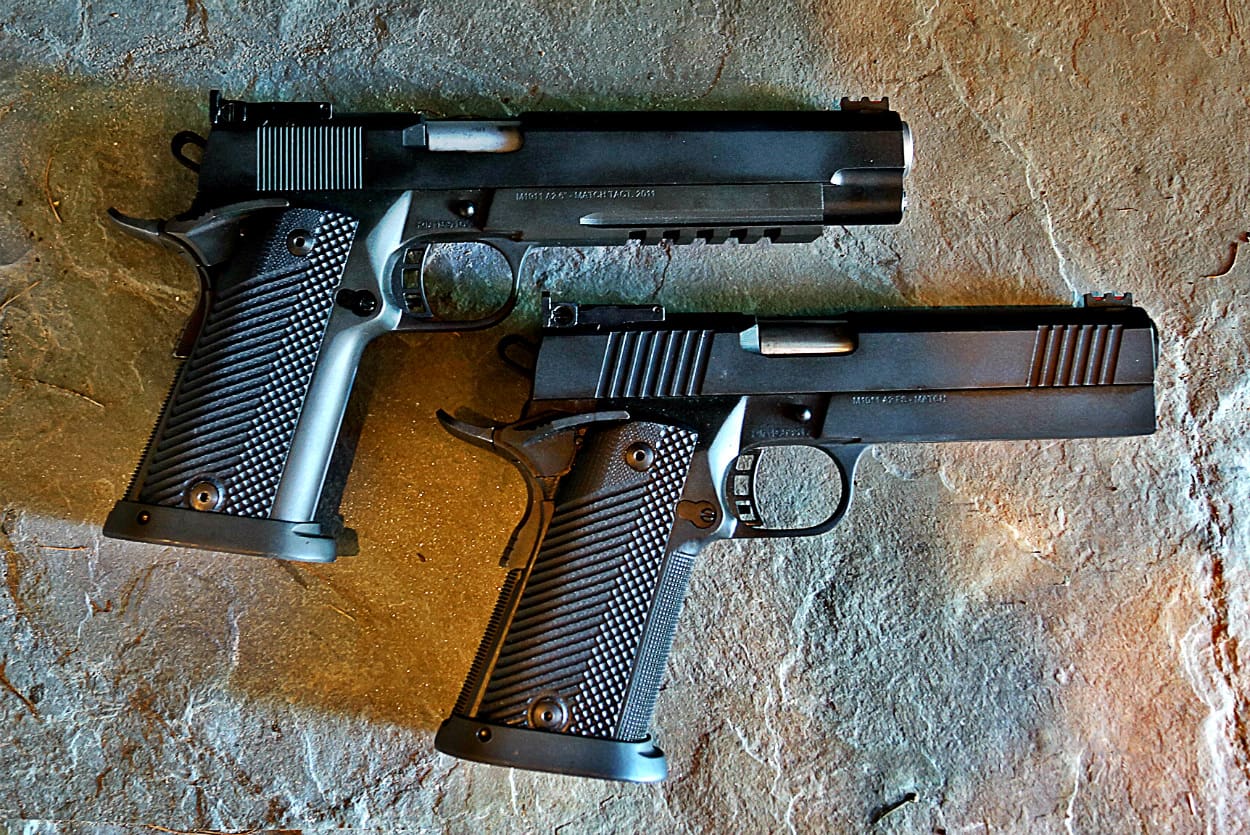

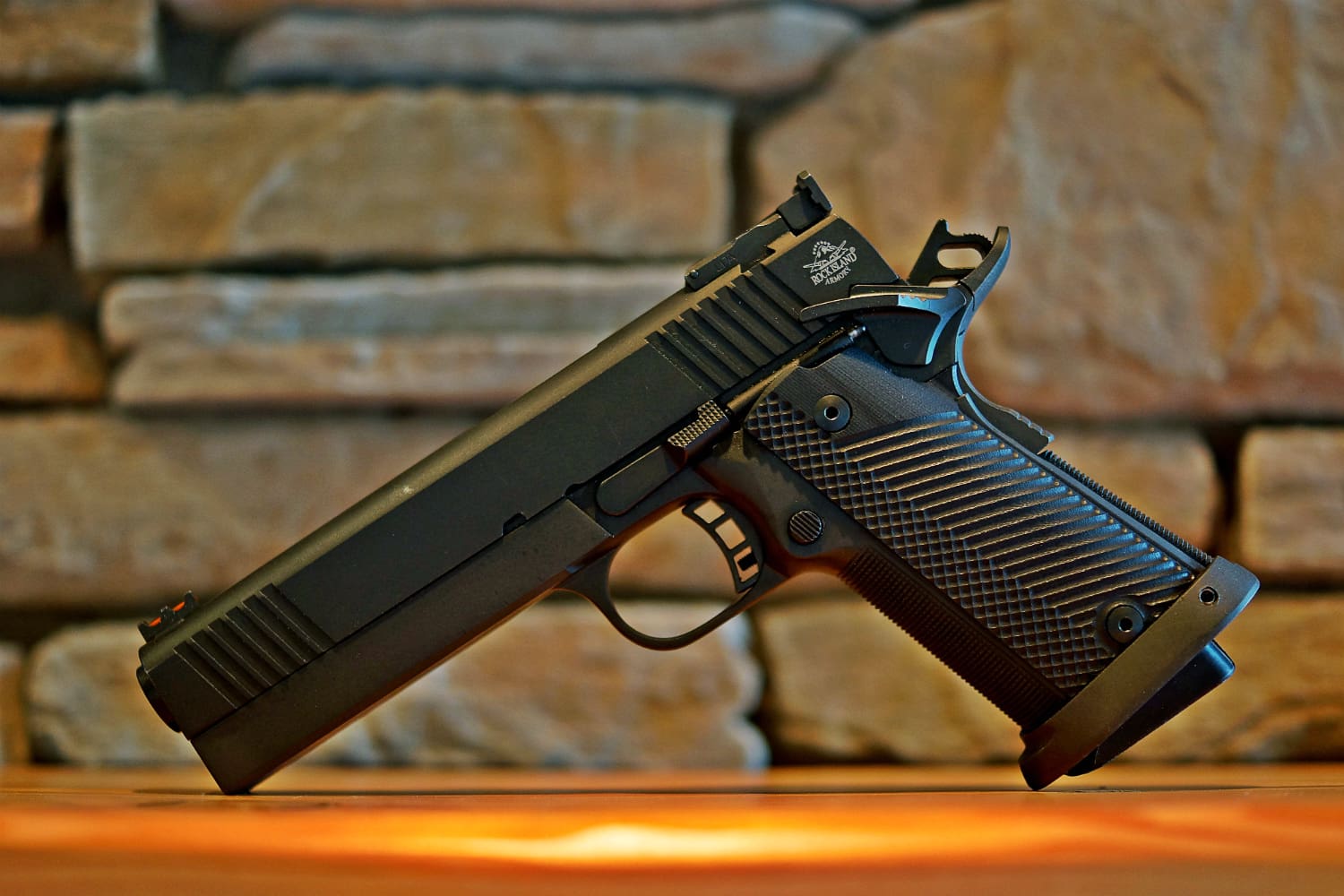
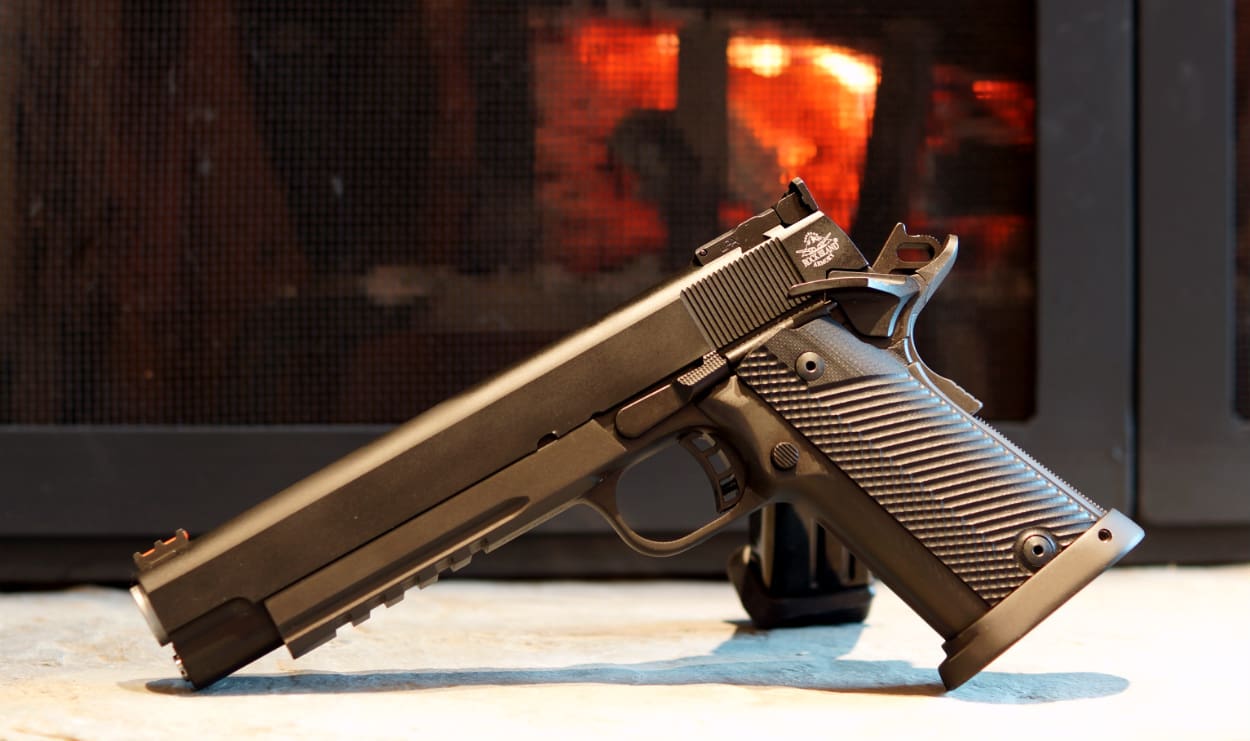
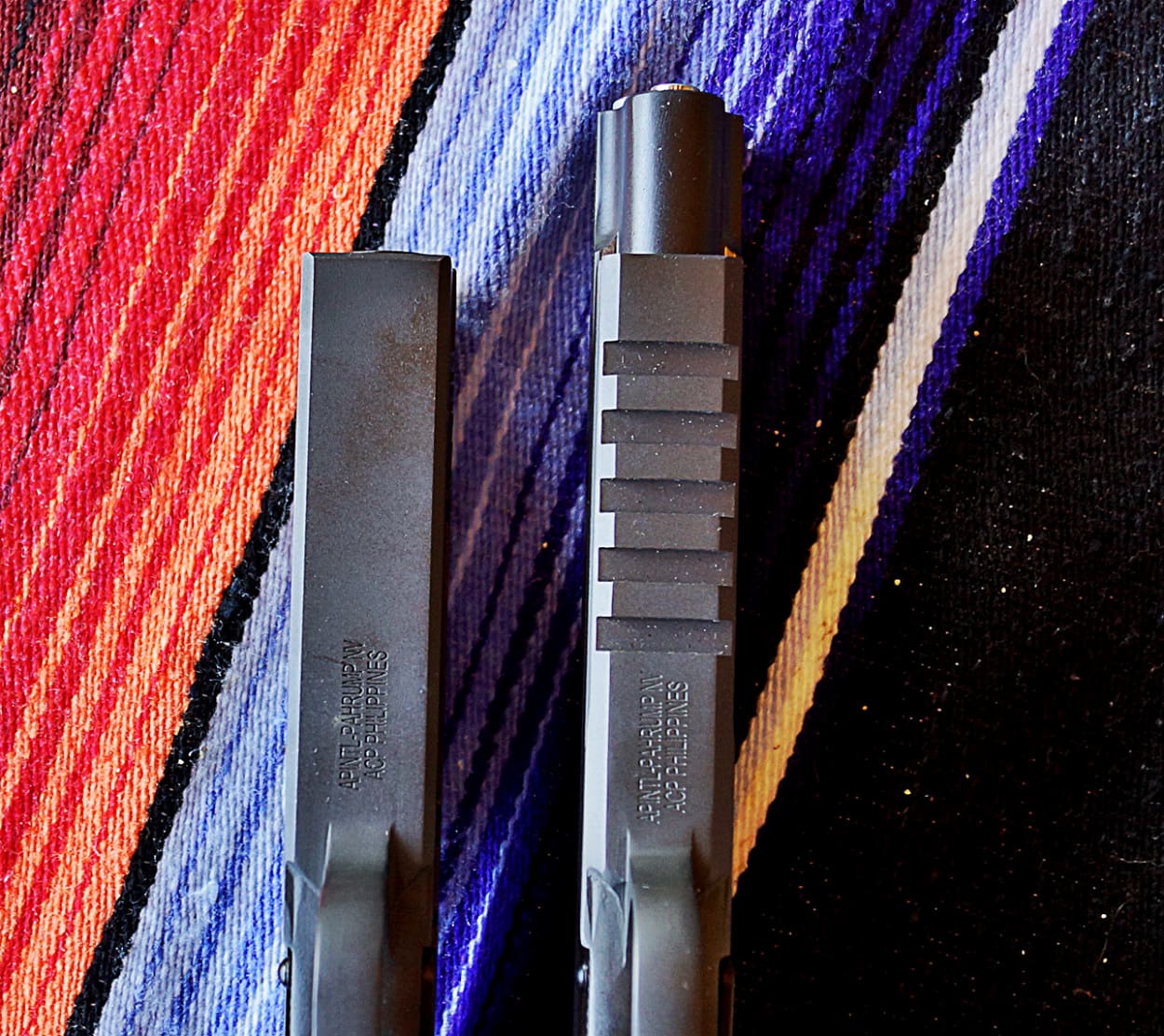
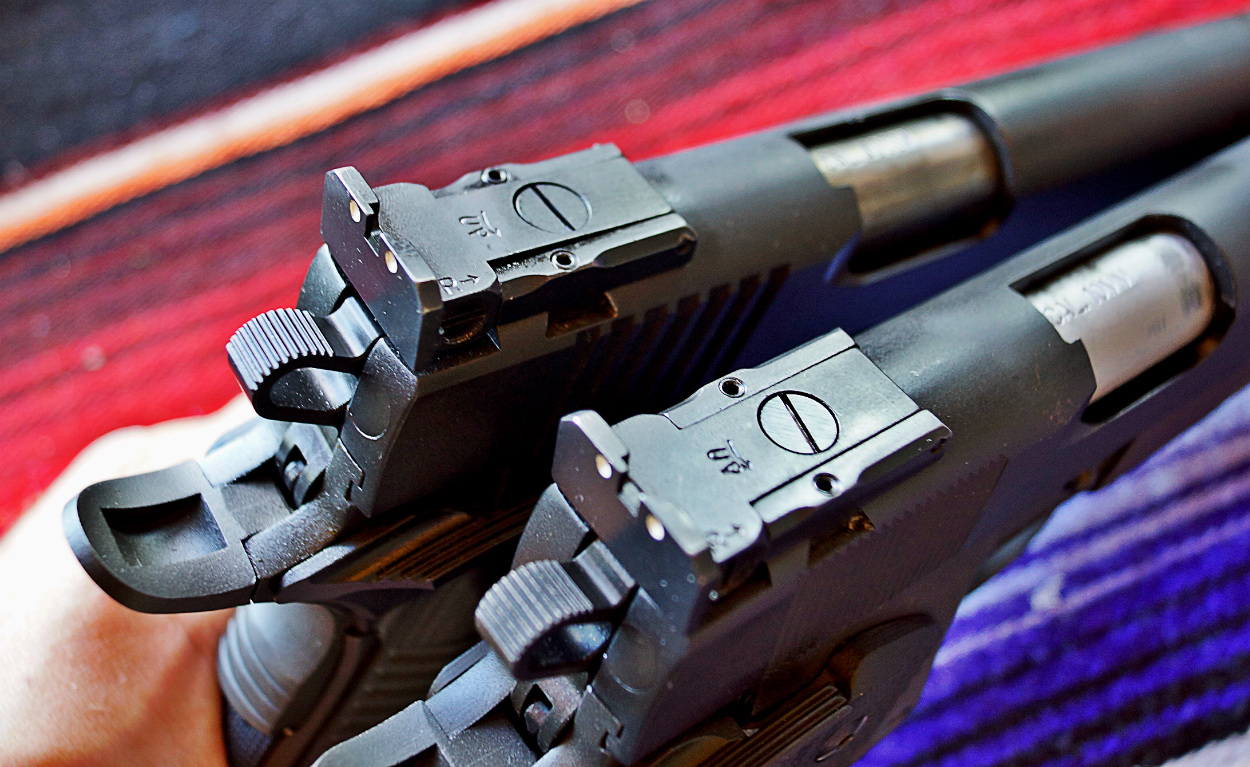

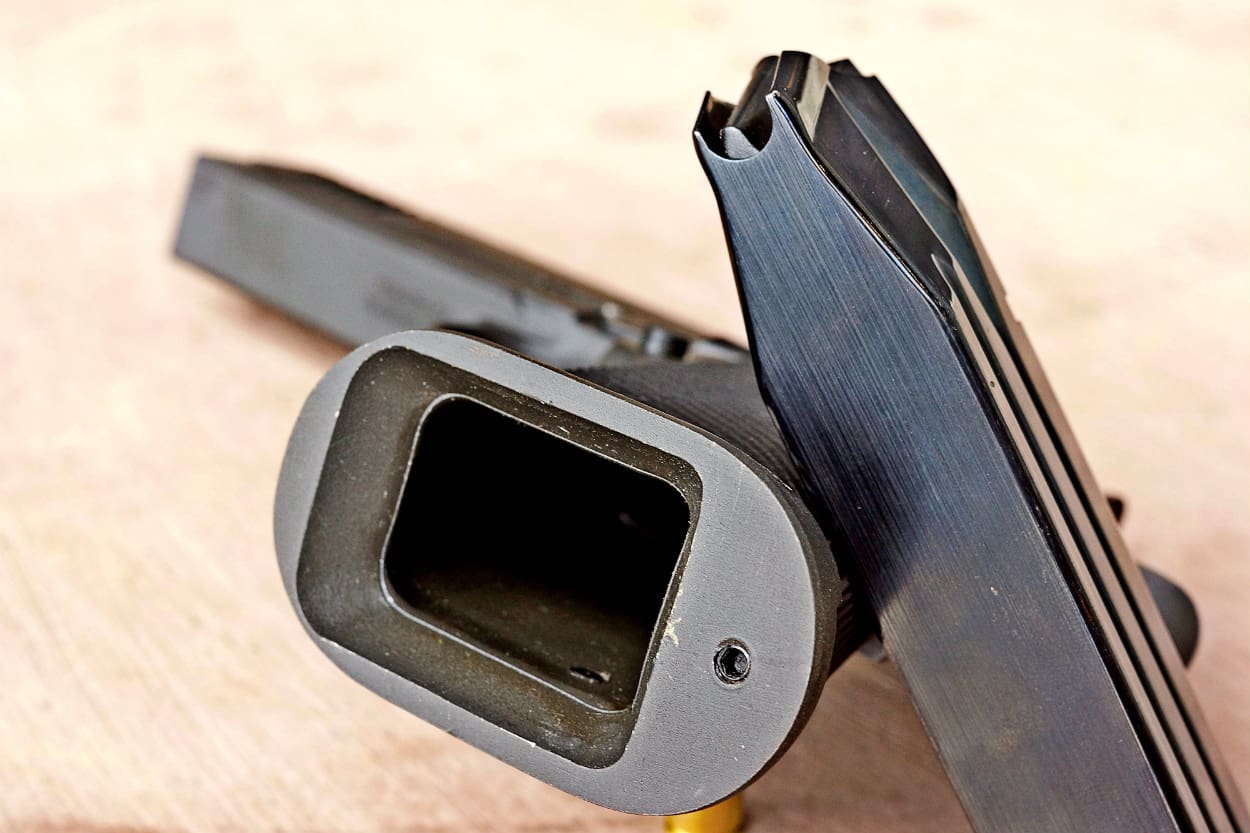
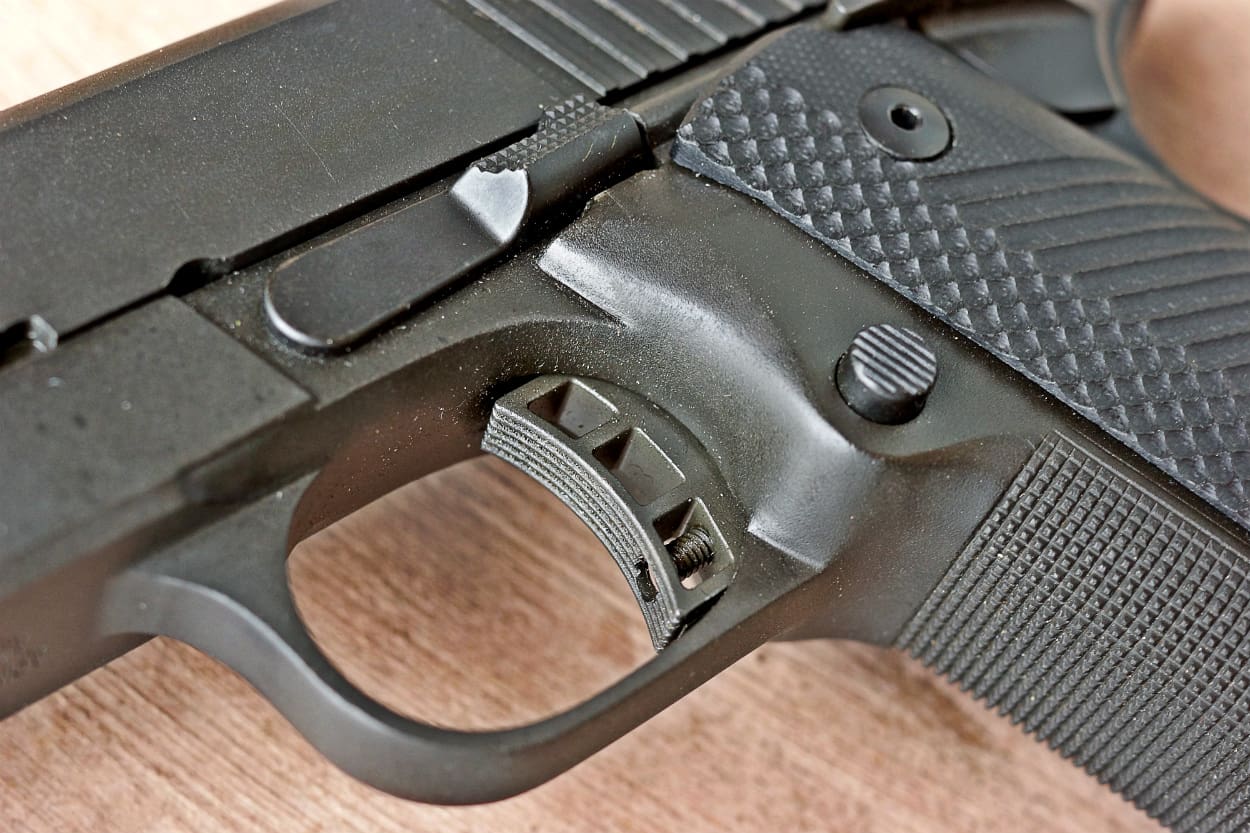

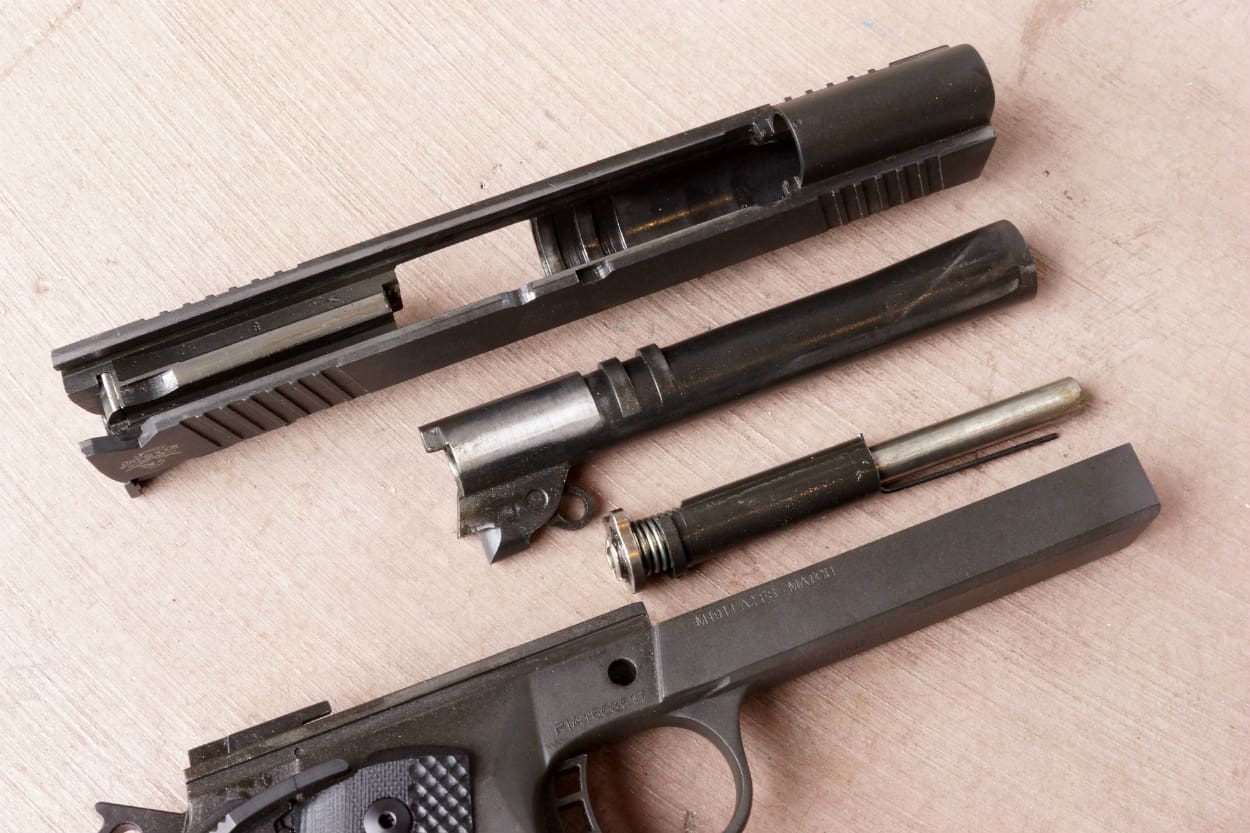
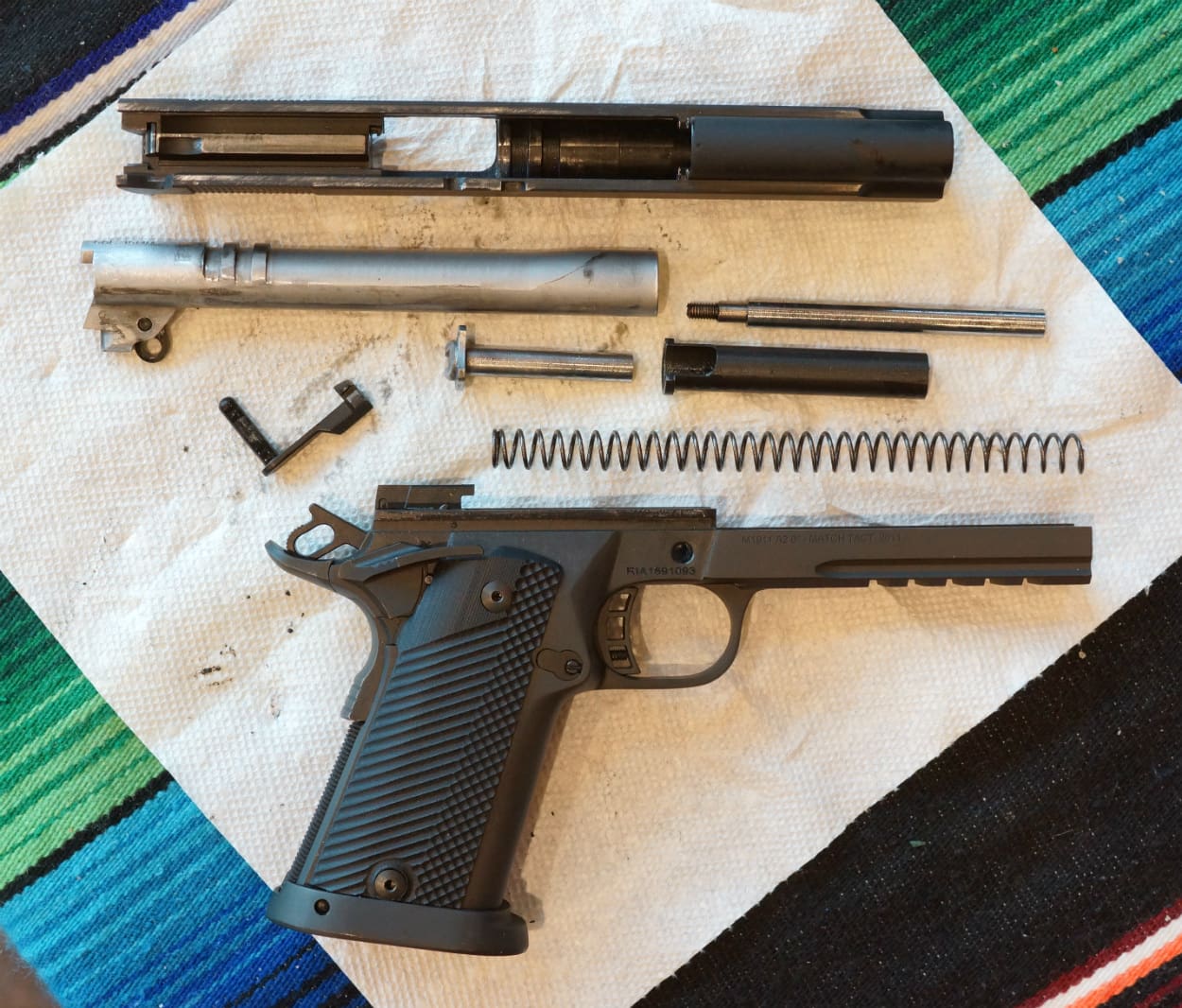
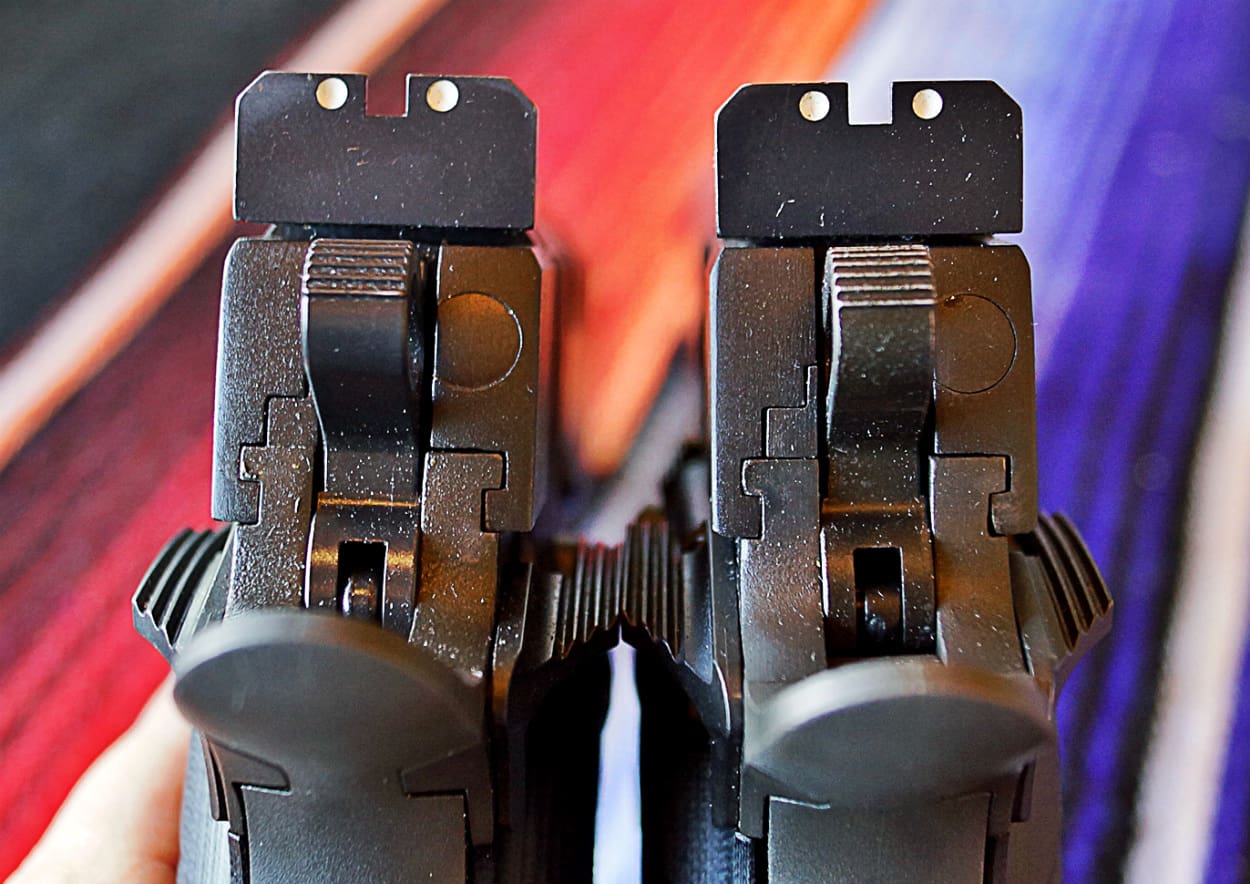
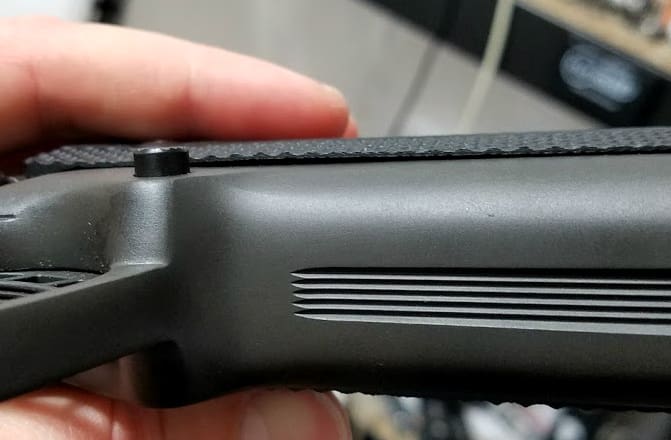
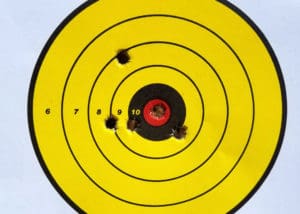

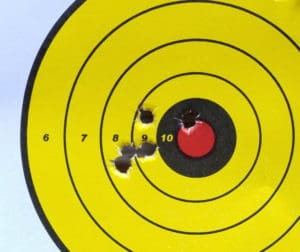




wonder if you can use full power 10mm(Underwood) in these?
Jeremy S. did
I wouldn’t attempt it in the .40 S&W one 😛 , but in the 10mm it ran just fine. Felt good, shot accurately, etc. I shot Underwood’s 180 grain TMJ as well as some 220 grain hard cast through it.
Thanks, Jeremy.
I like the magazine, and the flesh and bones of my hand, right where they are supposed to be. Had to ask. Hehe!
Thanks for the review, been eyeing the 10mm for a while.
Wonder if the Philippines “punisher” mayor or police chief carries these
you mean the Philippines Punisher PRESIDENT? 🙂
How would you compare the grip ergonomics, control accessibility, and recoil of the 10mm to the G40MOS?
I haven’t shot a G40MOS but I do own a G20SF and have shot that a whole lot. Despite the arguments this statement tends to result in, the truth is that I really do prefer the grip angle of a 1911 over a Glock’s. So that’s a plus for the RIAs — they point more naturally for me and they’re right on target without me having to adjust for the gun. The felt recoil on these RIAs is lower because of the weight. Now, with the 6″ slide on the G40 that might even things out. I feel like my G20SF is super controllable and lighter on recoil than the single stack 1911s I’ve shot in 10mm, and it’s possible that the polymer frame actually flexes a bit and helps to absorb some of that recoil. I can shoot the G20 rapidly and accurately. However, it still has more flip and more felt recoil than the RIA here just because the RIA is so massive and there’s lots of extra weight over the nose. It’s a super soft shooting 10mm and I think if I bothered to tune the recoil spring weight to perfectly match full-power 10mm (e.g. underwood) it could be even softer.
Control ergonomics on the Glock are much better. I can manipulate the mag release and slide stop without shifting my grip. In normal practice I don’t use the slide stop to release the slide anyway, so I don’t care as much about that, and fixing the reach issue on the RIA’s mag release would be as simple as replacing it with an oversized one.
Grip ergonomics is a tougher one to answer as I think it’s more subjective — if you polled 10 people you’d probably have 5 preferring one and 5 the other. They’re both big but they’re also different. The 1911 is straight on the frontstrap and backstrap whereas the Glock has various sorts of curves going on. They’re both radiused nicely on the edges. Plastic and steel don’t feel the same.
Thank you, I appreciate the well thought-out answer. Seeing that the 20SF frame is the same width and girth as the 40MOS frame I’ll take your experience as applicable. I’ve had my eyes on one of these (or the single-stack TAC Ultra FS) ever since I fell in love with the 40MOS and cartridge.
Remember the Rock Island 1911s have fully supported chambers unlike the Glock 10mms have, might not make a huge difference to most but I like the extra piece of mind when I’m dealing with those kind of chamber pressures
FWIW, full power 10mm from a metal-framed P220 is quite manageable. More so than from the G20 (which itself is not bad IMHO).
I really wish these came in the ‘ol 9mm.
They have a few double stack 9mm options. Not sure if all of them come with the .22 TCM conversion automatically, but there are like 4 options for double stack in that product category. For instance: http://armscor.com/firearms/tcm-series/tcm-tac-ultra-fs-hc-combo-22tcm-9mm/ That’s the full-size TAC Ultra so full length rail, 17+1 rounds, conversion so you can shoot both 9mm and .22 TCM, and full MSRP is $960.
Oh
WELL THEN, there goes my wallet
thanks!
I have one of the “GI” models in .45. Fantastic 1911. Street price of about $400. 0 problems and it has a lifetime warr that follows the pistol not the owner. New or used they have a full warr. Someday I’ll get one of the double stacks .45’s
Thanks for the writeup! The fit and finish are much better than I expected. Dunno if they upped their game, or have I been biased all along.
Btw, when there is a fired case in the box, does that mean:
the big brother recorded the pseudo-scientifical “ballistic fingerprint” of the projectile;
or
the big brother just did not collect the said case into a database?
Nothing to do with any database. The bullets aren’t collected and other cases aren’t kept and the ones you get haven’t been logged or photographed or anything like that. It’s just part of the testing and inspection process. Every gun sold new has to be test fired by the manufacturer first, and quite a few states require a spent case to be in the box with a new gun as “proof” that it was test fired. Some manufacturers only include a case when a gun is sent to one of those states, and some manufacturers put a case(s) in every single box just to make it easier and not worry about packing different things for different states (same goes with gun locks, state-specific safety warnings, etc).
That clears it up. Thanks!
I have the Rock version in 9mm. It called for a 500 round break-in but I quit counting after 400 flawless rounds. Accurate, reliable and reasonably priced is a winner.
I have the Rock version in 9mm. It called for a 500 round break-in but I quit counting after 400 flawless rounds. Accurate, reliable and reasonably priced is a winner.
Have the 5 inch barrel single stack version of the 10mm. The full length dust cover makes it difficult to find a good holster it. But the gun is accurate and reliable. It’s my primary carry gun.
I have the FS TAC II 10mm, fits in pretty much any old 1911 holster
On these types of 1911 (ie, those with a tapered barrel and no bushing), take care to clean the exterior of the barrel and interior of the slide where the barrel & slide mate up. Grit/dust/etc in this interface can eventually cause the barrel to loosen in the slide, which will cause your groups to open. In a normal 1911, you’d just replace your bushing and bushings come over-sized to be fit to your barrel/slide to allow you to tighten up a worn slide or barrel.
Anyone know of a holster to fit this big 10mm? What about with an X300?
Why wouldn’t they checker the front strap on the 10mm.
Found a way around the lack of checkering for the 10mm. Bought it in .40 (I know, but I wore gloves) and then purchased and fitted a SVI barrel in 10mm.
The other way would be to simply have a smith use a chambering reamer for .40 and ream it out to 10mm specs.
That way I have my cake and ate it too.
Contrary to much of the commentary seen on social media, there is far more to gun ownership than simple “practicality.” At the top of the list is pure enjoyment—it is supposed to be fun. A big part of that fun is accessorizing and personalizing your chosen firearm. Many of the more popular polymer-framed pistols make this pretty simple. If you want to do that to your 1911, however, it may require a gunsmith.
I own the GI version in 45.solid and dependable , not a fan of the sites on it. but its just me not the gun quality. no problems at all from it after 700+ rounds. and the non gun friends of mine shoot it better than me, and love it.
Anyone know if the magazine release can be switched to the right side?
(easy to operate with right middle finger instead of twisting around on the left side with the thumb)
If you love to wear polyester fabric jackets? so check Salt N Pepa Jacket which is a most selling outfit in our store, Shop now and get amazing discounts and offers.